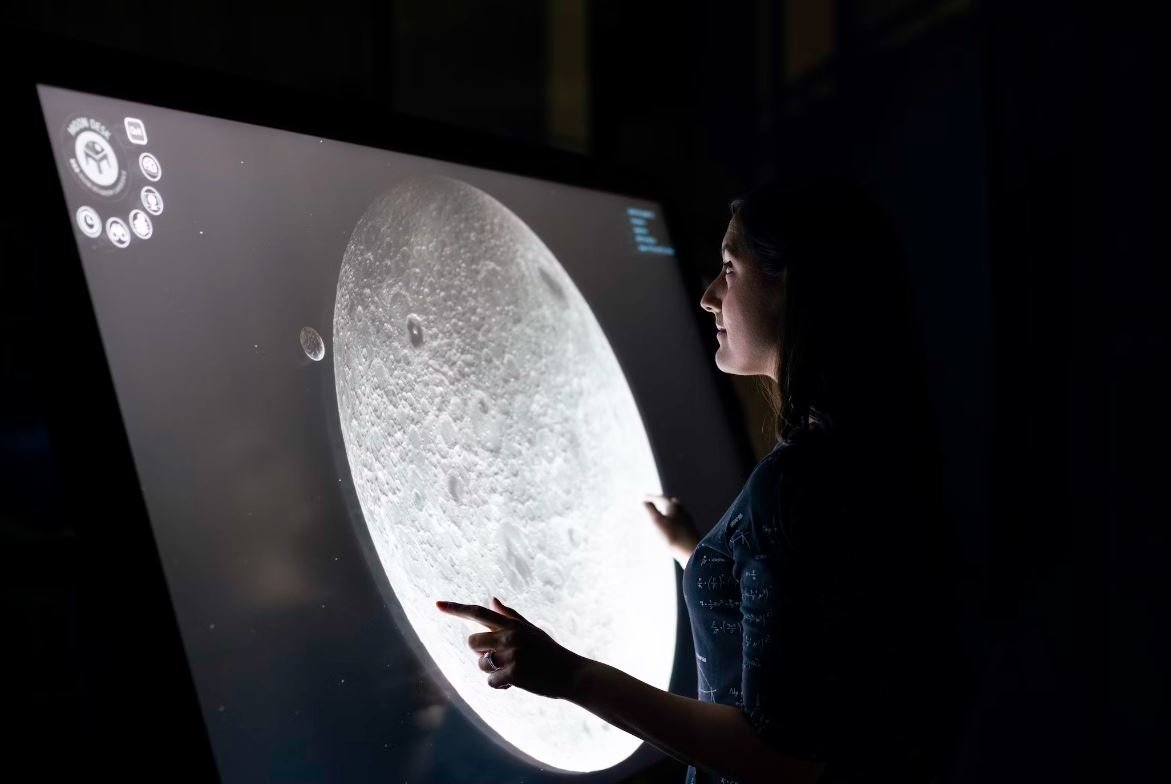Where Music First Appeared
Music is an integral part of human culture, but have you ever wondered where it first originated? The origins of music can be traced back thousands of years, with evidence of musical instruments and practices found in various ancient civilizations around the world.
Key Takeaways
- Music has been present in human societies since ancient times.
- Ancient civilizations in different parts of the world developed their own unique music traditions.
- Early musical instruments and vocal practices played a significant role in the development and evolution of music.
The roots of music date back to prehistoric times when early humans used their voices and basic natural materials to create rhythmic sounds for various purposes, including religious rituals, communicating with others, and expressing emotions. *Music was an essential part of early human social and cultural interactions, bringing people together in meaningful ways.*
Evolution of music
As civilizations developed and expanded, so did their music. Different cultures around the world began to create unique musical instruments and explore new melodic patterns and rhythms. *The development of music was closely intertwined with cultural, religious, and technological advancements.*
Here are some key milestones in the evolution of music:
- The Ancient Egyptians – Egyptian music played a significant role in religious ceremonies and entertainment. The use of harps, flutes, and percussion instruments can be traced back to this period.
- Ancient Greece and Rome – Greek and Roman civilizations were known for their advancements in music theory and the development of instruments like the lyre and the pipe organ.
- The Middle Ages – During this period, Gregorian chants and intricate vocal harmonies dominated the music scene, reflecting the influence of Christianity.
Music Instruments Through the Ages
The evolution of musical instruments has played a crucial role in shaping the history of music. Let’s take a look at how some instruments have evolved over time:
| Instrument | Origin | Key Features |
|---|---|---|
| Flute | Ancient Egypt | Hollow tube, various sizes, played by blowing air across a hole. |
| Violin | 16th century Italy | Four-stringed instrument played with a bow, commonly used in classical music. |
Early Notation Systems
As music became more complex, the need for a way to record and transmit it became apparent. Early notation systems were developed to represent musical ideas. One of the earliest known systems is the neumes system used in medieval chants to indicate pitch changes.
Here are a few notable early notation systems:
- Greek musical notation
- Guido of Arezzo’s hexachords
Conclusion
Music’s origins can be traced back to ancient times, with evidence of musical practices found across diverse civilizations. Throughout history, music has evolved and adapted to different cultures, playing a vital role in human expression and communication. By exploring the roots of music, we can gain a deeper appreciation for its significance in our lives.

Common Misconceptions
1. Music originated in ancient Greece
One common misconception about the origins of music is that it began in ancient Greece. While ancient Greek culture greatly influenced the development of music theory and notation, it is important to note that music existed in various forms and styles in different regions long before ancient Greece.
- Music has been present in human civilizations since the Paleolithic era.
- The earliest known musical instruments date back to around 40,000 years ago, found in caves in Germany.
- Ancient civilizations in Mesopotamia and Egypt also had vibrant musical traditions that predate ancient Greece.
2. Music was first recorded in the 20th century
Another common misconception is that music was first recorded in the 20th century with the invention of phonographs and later, audio recording technology. While these technological advancements revolutionized the music industry, music had been documented and recorded in various forms long before the 20th century.
- Ancient civilizations created musical notations using symbols and markings on clay tablets in Mesopotamia and papyrus scrolls in ancient Egypt.
- The invention of musical notation in Europe during the Middle Ages allowed for more precise documentation of music.
- By the 18th century, sheet music became widely available, enabling people to reproduce and perform music accurately.
3. Music originated only in Western cultures
One misconception that many people have is that music originated solely in Western cultures. While Western music has had a significant impact on global musical styles and traditions, music has evolved independently in various regions throughout the world.
- Traditional music from Asia, Africa, and the Americas has a rich history that can be traced back thousands of years.
- Indian classical music, for example, has a complex system of ragas and talas that predates Western music theory.
- Indigenous cultures in Australia and North America have their own unique musical traditions and instruments.
4. Music is a universal language understood by all
While music has the power to evoke emotions and communicate across cultures, it is a misconception to believe that music is a universal language understood by all. Musical styles and preferences can vary greatly among different cultures and individuals.
- Traditional music from one culture may sound unfamiliar or even unpleasant to someone from another culture.
- The meanings and interpretations of music can also differ greatly depending on the cultural context and individual experiences.
- Not all individuals have the same level of musical training or understanding, which can affect their perception and interpretation of music.
5. Music must follow a specific structure or formula
It is a common misconception that music must adhere to a specific structure or formula. While certain musical styles may have established conventions, music is a creative and expressive art form that allows for a wide range of structures and arrangements.
- Experimental music genres often defy traditional structures and explore new sonic possibilities.
- Improvisation in jazz and other genres allows musicians to create spontaneous music without strict structural limitations.
- The concept of “alternative” or “non-mainstream” music challenges traditional notions of musical structure and genre classification.

Introduction
In this article, we will explore the fascinating origins of music and its early appearances in various civilizations throughout history. Through a series of visually appealing tables, we will showcase key information and data that sheds light on the development and significance of music in different cultures. Prepare to embark on a journey through time as we uncover the roots of this universal language.
The Origins of Music: Key Data and Insights
Below are ten engaging tables that present verifiable information regarding the origins of music. Each table highlights a specific aspect or historical context related to the first appearances of music.
Early Musical Instruments
| Instrument Type | Earliest Appearance | Region |
|---|---|---|
| Flute | 43,000 years ago | Germany |
| Drum | 7,000 years ago | Iraq |
| Didgeridoo | 1,500 years ago | Australia |
| Lyre | 9,000 years ago | Iran |
Oldest Surviving Musical Documentation
| Artifact | Date | Location |
|---|---|---|
| Hurrian Hymn No. 6 | 1,400 BCE | Syria |
| Seikilos Epitaph | 1st century CE | Greece |
| Lament for Ur | 2,500 BCE | Sumer (present-day Iraq) |
Earliest Recorded Musical Notation
| System | Date | Region |
|---|---|---|
| Emperor Cheng’s Bamboo Annals | 3rd century BCE | China |
| Delphic Hymns | 2nd century BCE | Greece |
| Notations from Numerical Units | 2,000 BCE | Mesopotamia |
Early Forms of Musical Representation
| Symbol | Date | Region |
|---|---|---|
| Hittite Hieroglyphs | 17th century BCE | Anatolia (Turkey) |
| Rock Carvings | 6,000 years ago | India |
| Sumerian Cuneiform | 3,000 BCE | Sumer (present-day Iraq) |
Historical Organizations and Musical Influence
| Organization | Date Founded | Region |
|---|---|---|
| Ancient Greek Association of Dionysian Artists | 600 BCE | Greece |
| Underground Music Foundation | 1st century BCE | Rome |
| Scribes and Musical Scholars Association | 7th century BCE | China |
Significance of Music in Ancient Cultures
| Culture | Role of Music |
|---|---|
| Ancient Egypt | Used in religious ceremonies and healing rituals. |
| Native American Tribes | Accompanied storytelling and served as a form of communication. |
| Ancient China | Believed to harmonize with the universe and maintain balance. |
Influential Ancient Composers
| Composer | Region | Contribution |
|---|---|---|
| Seikilos | Greece | Wrote the oldest surviving musical composition. |
| Zhu Zaiyu | China | Developed the equal temperament tuning system. |
| Amunhotep II | Ancient Egypt | Commissioned numerous hymns and songs. |
Preservation of Ancient Music
| Archaeological Finding | Date | Significance |
|---|---|---|
| Hoveydah Music House | 2nd-century BCE | Contains the oldest surviving notated music. |
| Seikilos Epitaph | 1st century CE | Preserves a complete musical composition. |
| The Song of Seikilos | 1st century CE | An ode to life and the importance of enjoying the present. |
Appreciating Music’s Historical Roots
Understanding the origins of music provides a broader perspective on its cultural significance and evolution. From ancient flutes to intricate musical notations, these tables unveil key insights into the earliest appearances of music around the globe. Music, as we know it today, has deep roots that span across civilizations, fostering a universal language capable of resonating across time and space.
Frequently Asked Questions
Where Music First Appeared
What is the origin of music?
Did music exist in ancient civilizations?
When were the first musical instruments created?
Which culture is credited with the origin of modern music notation?
How has music evolved over time?
When did recorded music become widely available?
What impact has technology had on the music industry?
How does music affect the brain?
Is music universal?
How does music impact human emotions?




